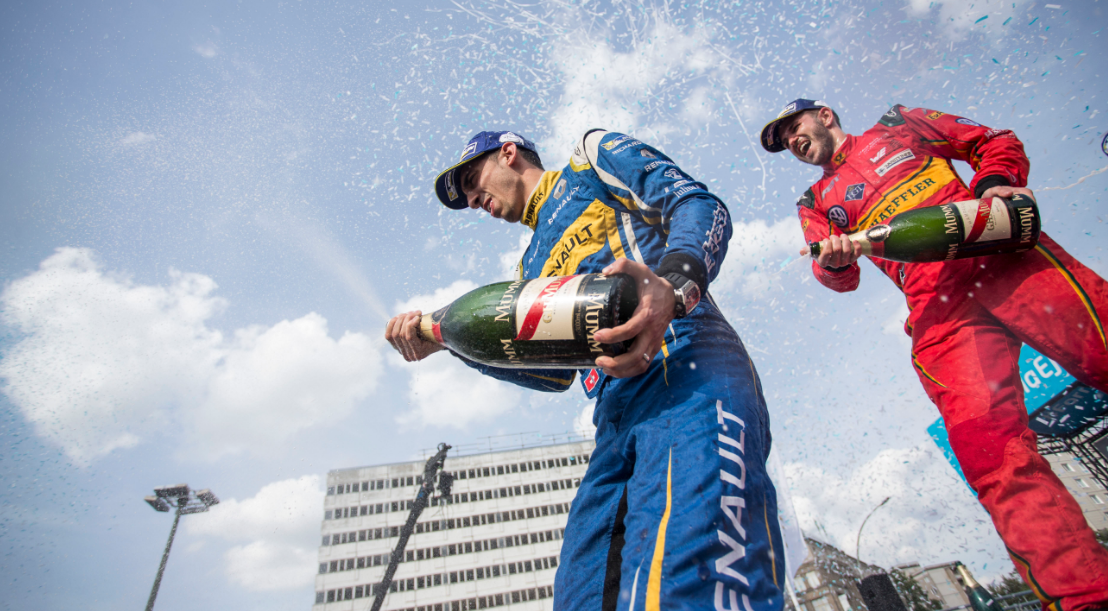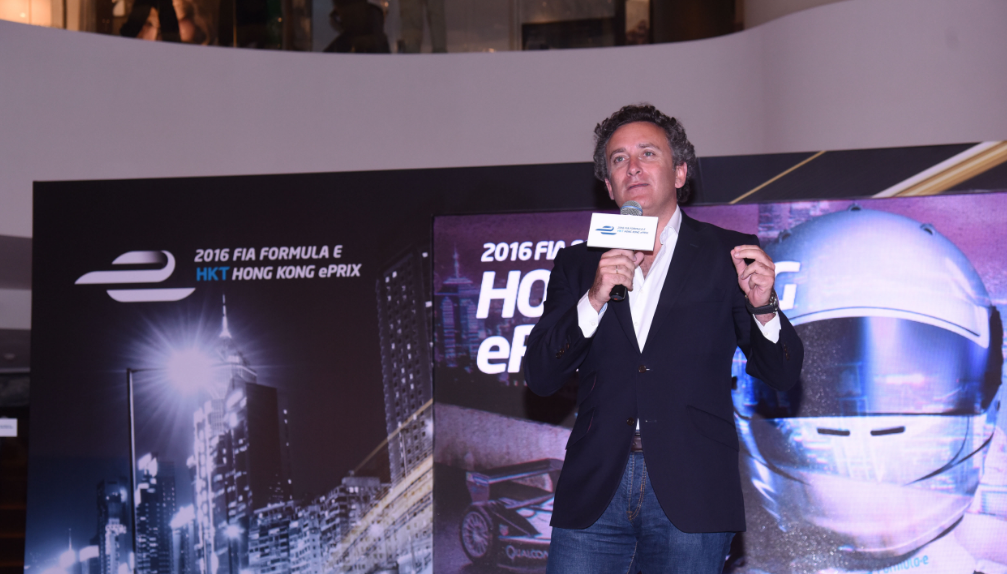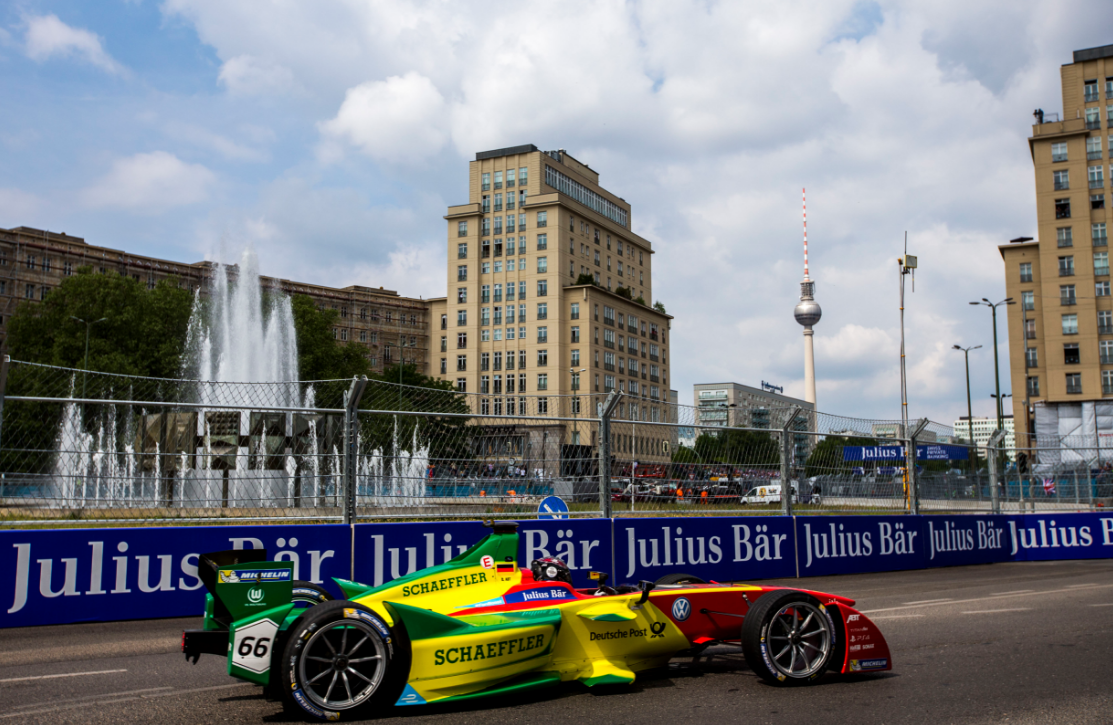Whisper it, but there’s a revolution going on in motorsport.
From Beijing to London, it’s taking place not on the traditional race tracks but the streets of some of the biggest cities in the world.
It’s called Formula E, and in just its second season it has already begun to clear out a path for itself, establishing itself as a legitimate alternative for motorsport fans across the world. But what is it?
We spent a weekend in Berlin learning about the new sport, peeking behind the scenes and talking to the people who make it tick.
At the most basic level, the first difference you notice between Formula E and the traditional showpiece of the motorsport world, Formula One, is in the cars themselves.
As the name implies, Formula E cars are electric and run on large batteries, part of the sport’s attempts to make things more environmentally friendly. This obviously raises new problems of its own, with the cars unable to run a full race on a single battery so, in order to avoid dangerous switch overs, each driver has two cars per race, both of which have the same set of standard road-ready tires.
It’s true that driving around in circles will never really be sustainable, but Formula E at least makes an attempt to reduce its carbon footprint.
“I think there are two pillars in the championship. One is motorsport, the other one is environment,” explains Formula E’s CEO, Alejandro Agag.
“But they go together, otherwise we wouldn’t be where we are. I think it’s a really essential part of our DNA to be a championship that promotes the environment and has a message to fight climate change and pollution in the cities.”
Football fans might recognise Agag from his time at Queens Park Rangers, where he served as chairman during the club’s takeover in 2007. Since then, he has moved back to his first love of motorsport.
The Spaniard has been tasked with establishing Formula E as a sport within its own right, and he feels that in two short years he has already succeeded in this sense.
“I think it is going fantastic. I think it was always going to be a challenging year because it’s the second season. You’re not new anymore, there is not the excitement of the first time. So there was the risk of losing a bit of momentum but it’s the opposite, because we are gaining momentum more and more.
“Formula E now has made its own mistakes in the world of motorsport but also it’s clear that it’s here to stay. This was a very challenging project. Obviously, sometimes even ourselves we didn’t know if we were going to be able to continue or not.
“But all those doubts are behind us and now Formula E has a very bright future, and I think that is also perceived by everyone around Formula E. It’s like a snowball, you get more and more people and momentum and then it grows more and more and more.”
Watch @jeanericvergne lose his front wing on the kerbs in #BerlinePrix Brought to you by @hpe https://t.co/PenItrFH8s
— Formula E (@FIAFormulaE) May 21, 2016
But Agag knows that coming into a marketplace so thoroughly dominated by Formula One will never be easy, so Formula E offers fans something it’s older brother cannot – access.
While Formula One is seen in some quarters as elitist and closed off, Formula E brings the races to the fans in the city centres and engages supporters through the Fan Boost system, whereby viewers can vote to give an extra blast of power to their favourite racer at key points in the race.
“I think we’re different. You have to offer a different product because if you offer the same product, you have other things which are already there for a long time and are very, very good. So you really need to offer something really different.
“And the new technology, being green and in the city – I think these three elements together are the mix that make Formula E a different proposition. And then fans follow.
“Being in the heart of the city is bringing the show closer to the people. If we were on a track two hours from the town, it would be very difficult for us to engage with the people from the city. And also to convey our message. Because our message is that electric cars are for the city, it is a solution for mobility in the cities.”
On July 2 and 3, Formula E comes to London for the final stage of this year’s championship, with two races taking place over two days at Battersea Park in west London.
Unlike some of its competitors, Formula E’s ePrixs take place on the same day as qualifying. This is partly to add to the sense of occasion, while also to reduce the amount of time they shut down a city for.
Last year, the final race of the season was won at London by Englishman Sam Bird. This year, Bird finds himself in third place in the individual standings, looking to secure a podium finish for the year.
A controversial penalty in Berlin means that he cannot hope to finish higher than third this year, but the Virgin Racing driver is not ready to give up his place to anyone.
“Yeah I’m looking forward to it,” he says. “Just now there’s no chance of winning any title which is fine because I wasn’t really aiming for it anyway. You know, third place is still not mine to lose, but I have a good gap to beat four so if I can consolidate that after the first race in London, that would be nice.
“In comparison to some others, the gap has gotten bigger to the front with the car that we’ve got. So I think we’ve done a really good job this year actually. Next year will be better.”
Until then, it’s all eyes on the first weekend in July.
To purchase tickets for the Visa London ePrix on July 2 and 3, visit http://fiaformulae.com/en/tickets. Under 16s go free.








































